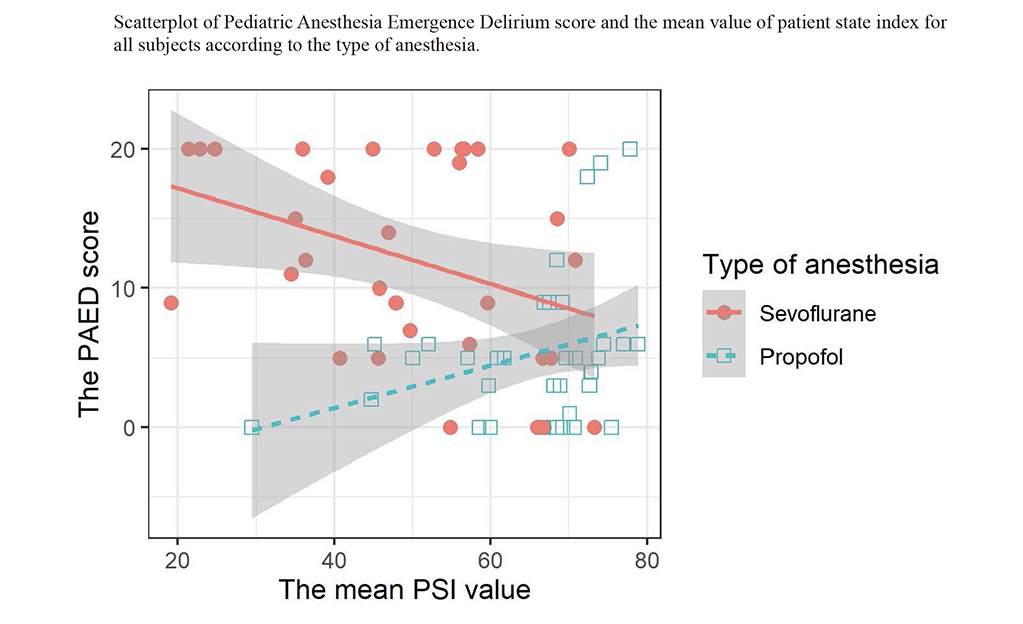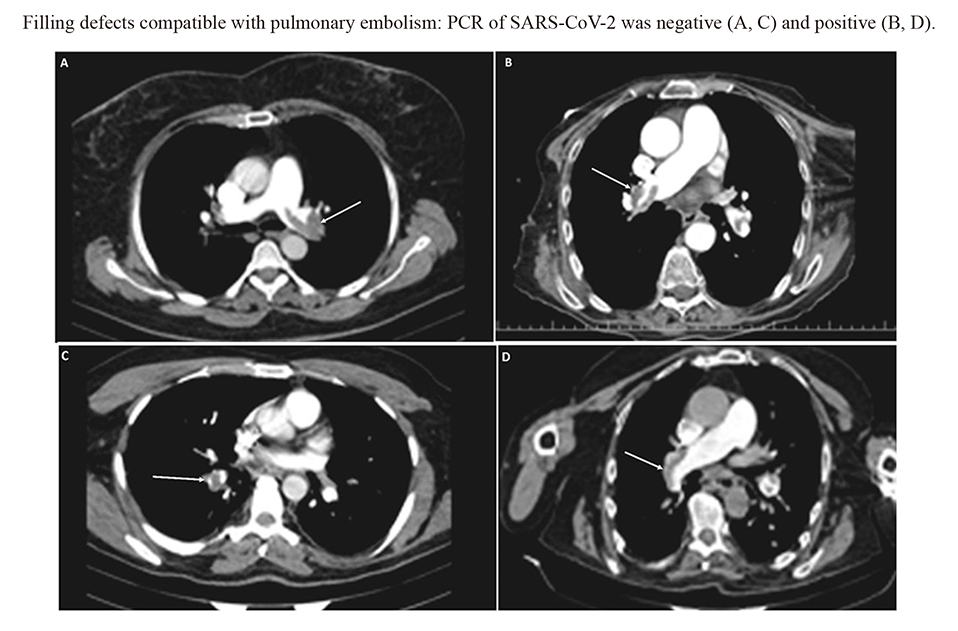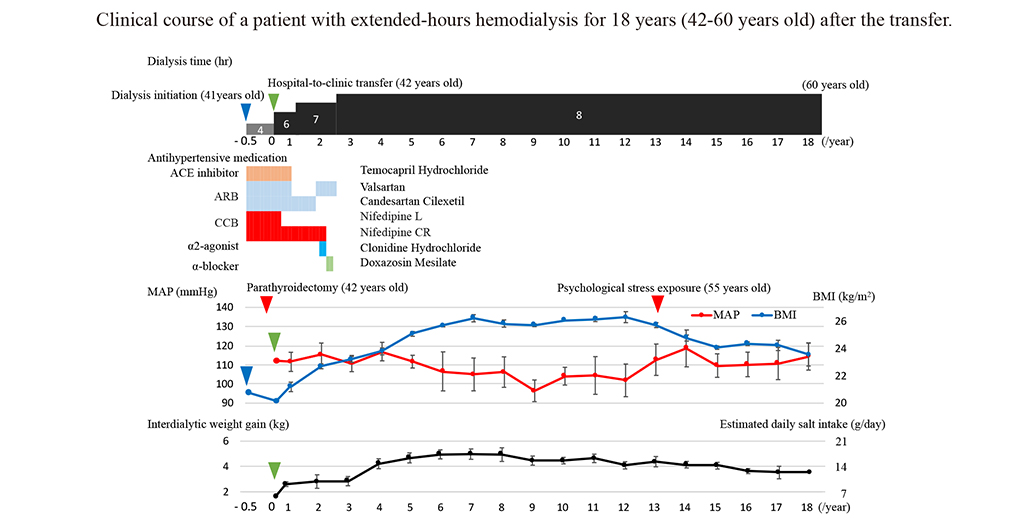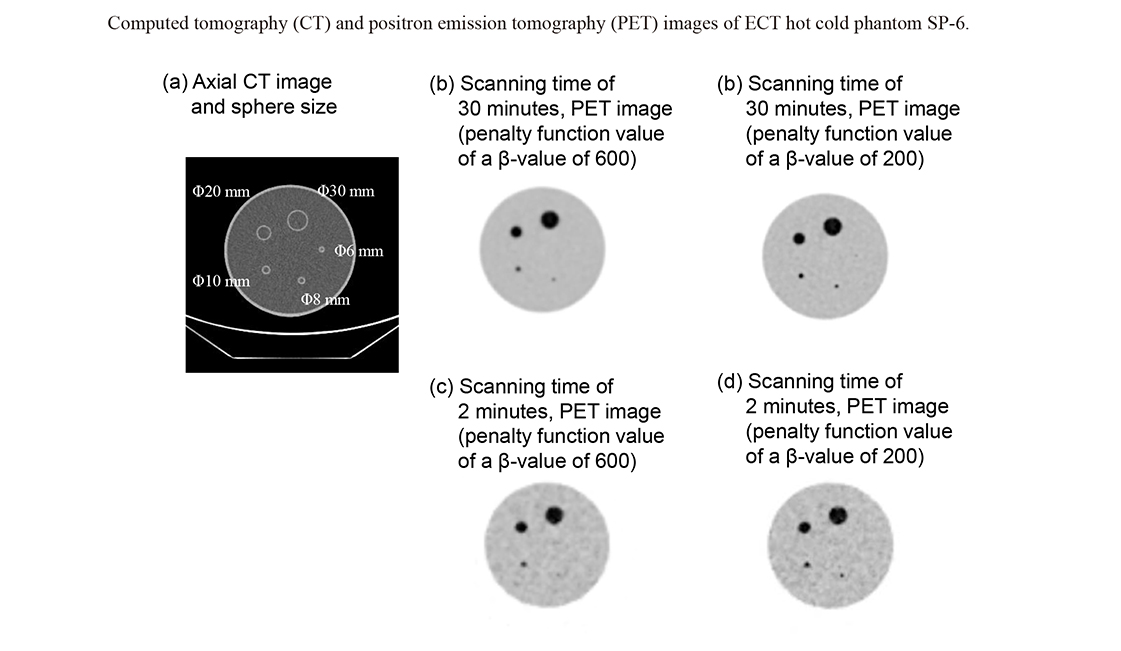
- Issue 4 Pages 273-
- Issue 3 Pages 181-
- Issue 2 Pages 93-
- Issue 1 Pages 1-
- |<
- <
- 1
- >
- >|
-
Akihiro Kanaya, Takahiro Mihara, Shoma Tanaka, Maya Mikami, Toshihiro ...2023 Volume 260 Issue 2 Pages 93-98
Published: 2023
Released on J-STAGE: May 26, 2023
Advance online publication: March 09, 2023JOURNAL OPEN ACCESS FULL-TEXT HTMLIn the present study, we investigated the hypothesis that the depth of general anesthesia affects emergence agitation (EA) in children in the early postanesthetic period. We retrospectively examined male and female children (aged 1-9 years) who underwent ambulatory surgery that lasted < 2 h. Various parameters, including the modified Yale Preoperative Anxiety Score (mYPAS) before anesthesia induction, the Pediatric Anesthesia Emergence Delirium (PAED) score at recovery time, and the value of the patient state index (PSI), were extracted from our electronic anesthesia database. The relationships between the PAED score and the mean PSI values were examined with univariate analyses. We also investigated the associations among the mean PSI, propofol anesthesia, age, mYPAS, the type of surgery, and the total amount of fentanyl divided by body weight with the PAED score using multiple regression analysis with interaction terms. There were 32 and 34 patients in the sevoflurane and propofol groups, respectively. The PAED scores (all patients: r = −0.34, p = 0.0048; sevoflurane group: r = −0.37, p = 0.036) were negatively correlated with the mean PSI, whereas the PAED score in the propofol group [r = 0.31 (−0.03, 0.59), p = 0.073] did not show a significant positive correlation with the mean PSI in the univariate analysis. The multiple linear regression analysis outcomes revealed that the mean PSI value was an independent clinical factor associated with the PAED score. Intraoperative electroencephalogram monitoring may be proved as one of the useful tools for the assessment of EA risks in children.
 View full abstractDownload PDF (633K) Full view HTML
View full abstractDownload PDF (633K) Full view HTML -
Wei Zhang, Peng Chen, Zengyan Li, Rong Zhang, Jing Zhang2023 Volume 260 Issue 2 Pages 99-107
Published: 2023
Released on J-STAGE: May 26, 2023
Advance online publication: March 02, 2023JOURNAL OPEN ACCESS FULL-TEXT HTML
Supplementary materialKeratin-15 (KRT15) participates in the tumorigenesis of several cancers, especially in urinary tract carcinomas by regulating basal urothelial cell malignant proliferation and differentiation. This study intended to explore the association of KRT15 with tumor features and survival in renal cell carcinoma (RCC) patients. Totally, 210 RCC patients receiving surgical resection were retrospectively enrolled, and then, KRT15 was detected by immunohistochemistry (IHC) assay in the tumor and adjacent tissues. IHC score of KRT15 was increased in tumor tissues versus adjacent tissues (P < 0.001). Meanwhile, KRT15 was associated with RCC occurring in the left kidney (P = 0.024), tumor size > 10 cm (P = 0.035), higher N stage (P = 0.048), and higher tumor-node-metastasis (TNM) stage (P = 0.029). Additionally, high KRT15 (IHC score > 3) estimated poor disease-free survival (DFS) (P = 0.008) and overall survival (OS) (P = 0.011). In addition, multivariate regression analysis revealed that high KRT15 [hazard ratio (HR) = 1.719, P = 0.023], higher pathological grade (HR = 1.847, P < 0.001), and higher N stage (HR = 3.447, P < 0.001) were independently related to poor DFS; high KRT15 (HR = 1.796, P = 0.034), eastern cooperative oncology group performance status score (1 vs. 0) (HR = 1.734, P = 0.037), higher pathological grade (HR = 2.045, P < 0.001), and higher N stage (HR = 3.966, P < 0.001) were independently linked to unsatisfactory OS. Furthermore, data from Gene Expression Profiling Interactive Analysis suggested that KRT15 was linked to poor DFS (P = 0.037) and OS (P < 0.001); data from THE HUMAN PROTEIN ATLAS revealed that KRT15 was associated with shorter OS (P < 0.001) in RCC patients. In conclusion, KRT15 is increased in tumor tissues, and correlates with higher tumor stage and larger tumor size, along with poor prognosis for RCC.
View full abstractDownload PDF (4240K) Full view HTML -
Jin-Juan Zhu, Zhi-Hong Zhong2023 Volume 260 Issue 2 Pages 109-117
Published: 2023
Released on J-STAGE: May 26, 2023
Advance online publication: March 16, 2023JOURNAL OPEN ACCESS FULL-TEXT HTMLThe modulation of gene expression via DNA methylation modifications is relevant to the pathogenesis of periodontitis. This study aimed at identifying novel biomarkers in gingival tissues from periodontitis by integrally analyzing methylation profiles and gene expression data. Differential gene expressions (DGEs) of dataset GSE106090 were obtained from the Gene Expression Omnibus (GEO) database for Gene Ontology (GO) and Kyoto Encyclopedia of Genes and Genomes (KEGG) pathway analysis. DNA methylation DGEs (DM-DGEs) were analyzed from dataset GSE173082. After integrating these two datasets, expressions of common genes were validated in gingival tissues from healthy controls and periodontitis patients by real-time quantitative polymerase chain reaction (RT-qPCR) and western blotting. GO analysis of 748 upregulated and 847 downregulated DEGs from the GSE106090 dataset revealed that immune response-regulating signaling pathway, cell-cell junction and signaling receptor activator activity as the top enriched biological process (BP), cellular component (CC) and molecular function (MF), respectively. DEGs were mainly enriched in cytokine-cytokine receptor interaction, Ras signaling pathway, and chemokine signaling pathway. There was one up-regulated mRNA with hypo-methylated gene [ADAM28 (a disintegrin and metalloproteinase 28)] and one down-regulated mRNA with hyper-methylated gene [ADAMTSL3 (a disintegrin-like and metalloprotease domain with thrombospondin type I motifs-like-3)] after integrating GSE106090 and GSE173082 datasets. Increased ADAM28 expression was validated in gingival tissues from periodontitis patients as compared to the healthy controls with decreased ADAMTSL3 expression, which were correlated with disease stage. ADAM28 and ADAMTSL3 may act as novel biomarkers in gingival tissues from periodontitis by a comprehensive analysis of bioinformatics methods and executed validation.
 View full abstractDownload PDF (2192K) Full view HTML
View full abstractDownload PDF (2192K) Full view HTML -
Hiroyuki Tsuchie, Hidekazu Abe, Norimitsu Masutani, Naohisa Miyakoshi2023 Volume 260 Issue 2 Pages 119-126
Published: 2023
Released on J-STAGE: May 27, 2023
Advance online publication: March 16, 2023JOURNAL OPEN ACCESS FULL-TEXT HTMLTeriparatide plays an important role in the treatment of patients with severe osteoporosis; however, it is meaningless if patients cannot continue. In recent years, the use of a twice-weekly auto-injector teriparatide preparation has become possible. However, its continuation rate and the factors affecting it have not been adequately investigated. Therefore, this study aimed to examine the continuation rate of twice-weekly teriparatide and the factors affecting it. This retrospective study included 143 patients who were administered teriparatide weekly (65 patients) or twice-weekly (78 patients) in a rural hospital. Patient information, such as age, the distance between the hospital and home, family structure, past osteoporosis treatment and fracture, adverse events, and period of teriparatide continuation, were collected. We compared the differences in continuation rates between the twice-weekly and the weekly groups using the Kaplan-Meier curves, and we examined factors influencing teriparatide discontinuation using multivariate analyses. The 12- and 24-month continuation rates of twice-weekly administration of teriparatide were 79.5% and 61%, respectively. The twice-weekly group showed a significantly higher continuation rate (P < 0.0001). The multivariate analyses showed that older age and adverse events were identified as risk factors negatively influencing teriparatide continuation (P = 0.0237 and P < 0.0001, respectively). On the other hand, twice-weekly teriparatide was shown to reduce the risk of discontinuation (P = 0.0043). The twice-weekly teriparatide has a considerably higher continuation rate than the weekly teriparatide. Weekly preparation, older age, and adverse event were identified as risk factors negatively influencing teriparatide continuation.
 View full abstractDownload PDF (632K) Full view HTML
View full abstractDownload PDF (632K) Full view HTML -
Ibrahim Koc, Ozlem Yildiz, Mesiha Babalik, Rahime Ozgur Isıgıbol, Sevd ...2023 Volume 260 Issue 2 Pages 127-133
Published: 2023
Released on J-STAGE: May 27, 2023
Advance online publication: March 30, 2023JOURNAL OPEN ACCESS FULL-TEXT HTMLAcute pulmonary embolism (PE) and coronavirus disease ‐2019 (COVID‐19) are life-threatening diseases associated with significant morbidity and mortality. Yet little is known about their co-existence.This study explored clinical and laboratory differences between PE patients who tested positive with real‐time reverse‐transcription polymerase chain reaction (PCR+) and those who tested negative (PCR−) for SARS-CoV-2. Also, to determine whether ferritin D-dimer ratio (FDR) and platelet D-dimer ratio (PDR) can be used to predict COVID-19 in patients with PE. Files of 556 patients who underwent a computed tomography pulmonary angography (CTPA) examination were retrospectively investigated. Out of them, 197 were tested positive and 188 negative for SARS-CoV-2. One hundred thirteen patients (57.36%) in the PCR+ group and 113 (60.11%) in the PCR− group had a diagnosis of PE. Complaints, respiratory rate, and oxygen saturation level in the blood (SpO2) were recorded at the first admission. Monocyte and eosinophil levels remained low, whereas FDR and PDR were higher in the PCR+ group. No difference was detected in ferritin, D-dimer levels, comorbidities, SpO2, and death rates between the two groups. Cough, fever, joint pain, and higher respiratory rate were more common in the PCR+ group. A decrease in white blood cell, monocyte, and eosinophil levels, whereas an increase in FDR and PDR levels may predict COVID-19 in patients with PE. PE patients complaining of cough, fever, and fatigue should undergo PCR testing as common symptoms. COVID-19 does not seem to increase the risk of mortality in patients with PE.
 View full abstractDownload PDF (875K) Full view HTML
View full abstractDownload PDF (875K) Full view HTML
-
Hiroshi Kaneda, Toshiro Nishiyama, Kazunori Owada, Koichi Katayose, Yu ...2023 Volume 260 Issue 2 Pages 135-140
Published: 2023
Released on J-STAGE: May 27, 2023
Advance online publication: March 30, 2023JOURNAL OPEN ACCESS FULL-TEXT HTMLDialysis technology has made remarkable progress. However, many patients still suffer from malnutrition and hypertension. They cause many complications and significantly impact patients’ quality of life and prognosis. To solve these problems, we developed a new dialysis modality, extended-hours hemodialysis without dietary restrictions. Here we report a case of a man who has received this treatment for 18 years. He had been on conventional hemodialysis (three times a week for 4 hours) since his dialysis initiation. He suffered from hypertension and was on five antihypertensive drugs to control his blood pressure. In addition, dietary restrictions were strict, and the nutritional status was somewhat poor. After being transferred to our clinic, the dialysis time was gradually extended to 8 hours, and dietary restrictions were greatly relaxed. Interestingly, his body mass index (BMI) increased, and his hypertension was controlled. After 3 years, he stopped all antihypertensive drugs. This result suggests that improving nutritional status may control hypertension. However, salt intake was substantially increased. Serum phosphorus and serum potassium levels were at a slightly higher level but were controlled by medications. At the time of transfer, anemia was treated with erythropoiesis-stimulating agents and glycated iron oxide, but these drugs were gradually reduced and discontinued. However, he maintained high average erythrocyte counts and normal hemoglobin levels. Dialysis conditions were wholly slow dialysis, lower than conventional dialysis methods, but the dialysis efficiency was satisfactory. In conclusion, we speculate that extended-hours hemodialysis without dietary restrictions reduces the risk of malnutrition and hypertension.
 View full abstractDownload PDF (885K) Full view HTML
View full abstractDownload PDF (885K) Full view HTML
-
Hayato Odagiri, Kentaro Takanami, Tomohiro Kaneta, Akihito Usui, Ikuho ...2023 Volume 260 Issue 2 Pages 141-147
Published: 2023
Released on J-STAGE: May 30, 2023
Advance online publication: March 30, 2023JOURNAL OPEN ACCESS FULL-TEXT HTMLPositron emission tomography (PET)/computed tomography (CT) has improved sensitivity and resolution using silicon photomultiplier as a photosensor. Previously, only a fixed setting was available for the shooting time of 1 bed, but now, the shooting time can be changed for each bed. Time can be shortened or extended depending on the target area. A few studies reported on image reconstruction conditions for head and neck cancer in whole-body PET/CT examinations. Thus, this study aimed to optimize the imaging conditions of the head and neck region during whole-body imaging. A cylindrical acrylic container with a 200 mm diameter was used to simulate the head and neck area using a PET/CT system equipped with a semiconductor detector. Spheres of 6-30 mm in diameter were enclosed in the 200 mm diameter cylindrical acrylic vessel. Radioactivity in 18F solution (Hot:BG ratio 4:1) was enclosed in a phantom following the Japanese Society of Nuclear Medicine (JSNM) guidelines. Background radioactivity concentration was 2.53 kBq/mL. List mode acquisition of 1,800 s was collected at 60-1,800 s with the field of view of 700 mm and 350 mm. The image was reconstructed by resizing the matrix to 128 × 128, 192 × 192, 256 × 256, and 384 × 384, respectively. The imaging time per bed in the head and neck should be at least 180 s, and the reconstruction conditions should be a field of view (FOV) of 350 mm, matrix sizes of ≥ 192, and a Bayesian penalized likelihood (BPL) reconstruction with a β-value of 200. This allows detection of > 70% of the 8-mm spheres in the images.
 View full abstractDownload PDF (996K) Full view HTML
View full abstractDownload PDF (996K) Full view HTML -
Jiaojiao Fu, Jingyan Yang, Liying He, Caixia Yang, Jing He, Yanan Hua, ...2023 Volume 260 Issue 2 Pages 149-163
Published: 2023
Released on J-STAGE: June 07, 2023
Advance online publication: March 16, 2023JOURNAL OPEN ACCESS FULL-TEXT HTML
Supplementary materialNon-alcoholic fatty liver disease (NAFLD) is closely associated with low-grade chronic inflammation which is usually induced by intestinal dysbiosis. As ferulic acid (FA) has been proven effective at improving the intestinal integrity, we aimed to determine the effect of dietary FA on NAFLD development in high-fat dieted (HFD) mice, a well-established model of NAFLD. Male C57BL/6J mice were fed either a normal chow diet (ND) or HFD with or without FA (40 mg/kg) orally for 6 weeks. FA significantly alleviated lipid metabolism disorder and reduced liver inflammation in HFD mice (P < 0.05). As expected, FA improved the ileal intestinal integrity likely via the Nuclear factor E2-related factor 2 (Nrf2)/Heme oxygenase-1 (HO-1) signaling pathway. Importantly, we found that FA also relieved HFD-induced gut microbiota dysbiosis by inhibiting the growth of harmful bacteria such as Helicobacter and increased the abundance of many short-chain fatty acids (SCFAs)-producing bacteria (P < 0.05). Our data indicated that FA not only increased the colonic levels of SCFAs, but also maintained the colonic barrier integrity by up-regulating the expression of the epithelial tight junction protein. These data indicated that FA alleviated NAFLD by reducing circulating lipopolysaccharide levels. These effects may be due to improved proximal and distal intestinal barriers, which presumably mediated through the interaction of FA with the gut microbiota.
 View full abstractDownload PDF (7533K) Full view HTML
View full abstractDownload PDF (7533K) Full view HTML
-
Haruki Matsumoto, Kenji Saito, Yuya Sumichika, Shuhei Yoshida, Jumpei ...2023 Volume 260 Issue 2 Pages 165-169
Published: 2023
Released on J-STAGE: June 09, 2023
Advance online publication: April 13, 2023JOURNAL OPEN ACCESS FULL-TEXT HTMLFamilial Mediterranean fever (FMF) is a genetic autoinflammatory disease that is characterized by recurrent episodes of fever, serositis, and synovitis. FMF synovitis attacks resemble the clinical presentation of acute monoarthritis with pain and hydrarthrosis, which always resolve spontaneously. In most cases, colchicine will prevent these painful arthritis attacks in FMF. However, distinguishing these arthritis episodes from other febrile attacks with various clinical manifestations, including serositis, is important. We describe a Japanese patient with FMF who presented a febrile attack with severe abdominal and upper back pain (peri-scapula lesion), without any other joint involvement. A 44-year-old female patient presented with recurrent episodes of fever with abdominal and back pain. She carried heterozygous variants in exon 3 of the MEFV gene (P369S/R408Q). She was diagnosed with FMF according to Tel-Hashomer’s diagnostic criteria for FMF. Colchicine treatment improved her febrile attcks with peritonitis, however, severe back pain was sustained. This unique aspect of severe pain attack was successfully resolved by canakinumab treatment, which is a specific interleukin-1β monoclonal antibody, and was finally diagnosed as FMF-related shoulder joint synovitis. Further investigations were needed to evaluate the effectiveness of interleukin-1 antagonists against colchicine-resistant arthritis in FMF patients.
 View full abstractDownload PDF (1337K) Full view HTML
View full abstractDownload PDF (1337K) Full view HTML
-
Hui-Hua Tang2023 Volume 260 Issue 2 Pages 171-179
Published: 2023
Released on J-STAGE: June 15, 2023
Advance online publication: March 30, 2023JOURNAL OPEN ACCESS FULL-TEXT HTML
Supplementary materialMicroRNAs have been suggested to be signatures for predicting recurrence in breast cancer. This study aimed to identify miR-640 and miR-525-5p as relapse-associated microRNAs in systematically untreated and lymph node negative patients with primary breast cancer. GEO datasets GSE126125 and GSE103161 were analyzed to find the differential microRNAs in primary breast cancer with and without relapse. Systematically untreated patients (n = 180) with low-risk primary breast cancer were selected in this independent validation set, and 48 patients developed relapse within 5 years. Quantitative reverse-transcription polymerase chain reaction (qRT-PCR) was used to detect miR-640 and miR-525-5p expressions in tumor tissues. Based on the retrieved data from GSE126125, miR-640 and miR-525-5p expressions were significantly lower in tumors from patients with relapse compared to tumors from patients without relapse, accompanying by highly predictive potential to discriminate cases with and without relapse. The decreased miR-640 and miR-525-5p expressions were revealed in dead patients as compared to alive patients. In the independent validation set, patients with low expression of miR-640 and miR-525-5p showed poor outcome as compared to those with high expression. The receiver operating characteristic (ROC) curves of miR-640 and miR-525-5p for evaluation as diagnostic markers were depicted with the area under curves (AUCs) of 0.940 and 0.886, respectively. Tumors with larger size and higher grade had lower expression of miR-640 and miR-525-5p. MiR-640, miR-525-5p and histologic grade were significant predictors of relapse-free survival (RFS). Our study validated the values of miR-640 and miR-525-5p in predicting relapse of systematically untreated and lymph node negative patients with primary breast cancer.
 View full abstractDownload PDF (4358K) Full view HTML
View full abstractDownload PDF (4358K) Full view HTML
- |<
- <
- 1
- >
- >|